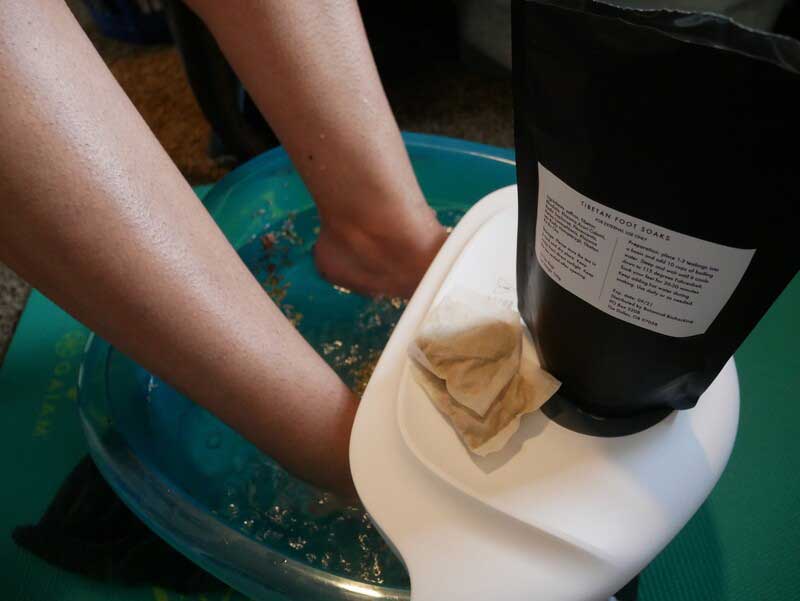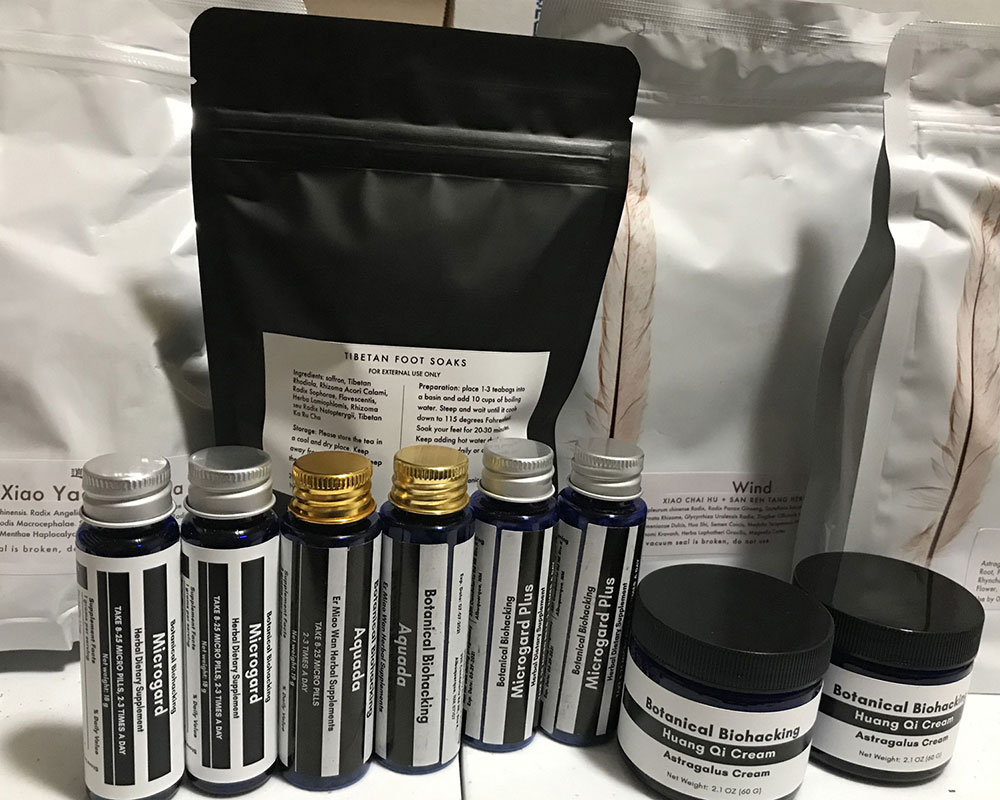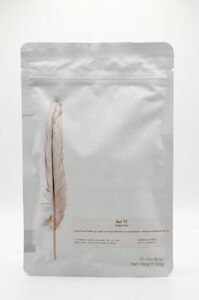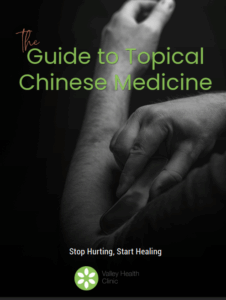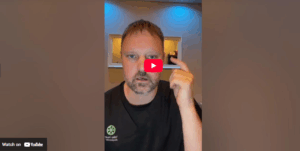Tibetan Herbal Foot Soaks have been a treasure in traditional health practices for centuries. They provide a unique and effective approach to relieving common discomforts experienced by expecting mothers, such as swelling in the feet while helping manage blood pressure. As we venture further into their healing potential, you’ll discover how these foot soaks can also serve as a soothing pre-labor support tool, preparing the body for the journey of childbirth. Let’s dive into the therapeutic world of Tibetan Herbal Foot Soaks.
Although scientific research has not proven any benefits, we have seen anecdotal results in our clinic to suggest these foot soaks could be a valuable addition to prenatal care. It certainly is safe and worth sharing.
The Story
A patient of ours, whom we will call Anna, shared a fascinating personal experience about using foot soaks and an herbal remedy during her pregnancy.
Anna was nearing her due date, with a check-up scheduled on a Friday. Her doctor examined her and found no signs of dilation, indicating that labor was still not imminent. Feeling disheartened but determined, Anna tried the foot soak method we had discussed and a herbal remedy, Mark T. Brinson’s Evil Bone Water (EBW), for her back rubs.
During the weekend, she religiously soaked her feet in a solution of warm water and Epsom salt, following our guidelines. Epsom salt, which contains magnesium and sulfate, is often used in foot soaks to help draw moisture out of tissues, relieving aches and pains.
In addition to the foot soaks, Anna also applied EBW on her back, which she believed would help prepare her body for labor. Her husband would massage her lower back with EBW, a practice that provided comfort and relief and served as a special bonding time between the expectant parents.
By Monday, when Anna revisited her doctor, she had dilated to 5 cm, a significant change from just the previous Friday. Encouraged by this progress, Anna continued with the foot soaks and the back massages with EBW. The following Tuesday, they arrived at the hospital bright and early at 6 am, and to their surprise, Anna was dilated to 8 cm. Her labor was swift, and within two hours, their baby arrived.
While there is no scientific evidence supporting the direct link between foot soaks or the use of EBW and the progress of labor, Anna’s story highlights how these safe, natural methods may provide comfort and potentially aid in preparation for labor. However, consulting with a healthcare provider before starting any new treatment or therapy during pregnancy is essential.
Unfolding the Mystery of Tibetan Herbal Foot Soaks
The concept of foot soaks may be relatively novel in the West, but it is a tradition steeped in centuries of practice in China. Imagine having a gym membership, but instead, you are a member of a foot soak club – it is that ingrained in Chinese culture. An old Chinese saying is akin to “the roots of the tree die first,” emphasizing the importance of foot care in overall health.Think back to childhood: the ease and grace of movement, the vibrancy of your skin flush with oxygenated blood, and how quickly you recovered from injuries. This optimal state is how our bodies are designed to function.
However, our bodies inevitably change as we age, and we often neglect self-care. Feet, in particular, bear the brunt of daily wear and tear. Reduced physical activity leads to slower circulation, causing cold feet from inadequate blood flow. This, in turn, can lead to varicose or spider veins and edema. Over time, the lack of nourishing blood flow can cause nerve deterioration, initially resulting in pain and eventually numbness.
The stiffening of muscles and fascia in our feet from the lack of warmth and nourishment can lead to more severe problems. This stiffness travels upward, affecting our lower legs, knees, hips, back, and neck. The soft and supple musculature that once absorbed the impact of our activities no longer functions optimally. The ensuing stiffness and discomfort reduce our physical activity, creating a vicious cycle of pain and debilitation. This cycle can even extend to heart health, with the potential for fatal outcomes like stroke or heart attack. This is where the magic of herbal foot soaks comes into play.
Foot soaking is not just a therapeutic practice; it is an opportunity for profound healing. The moment your feet meet the warm water, the blood vessels in your feet and lower legs dilate, inviting fresh blood flow. This increased circulation prepares your feet to absorb the beneficial oils and terpenes contained within the herbs used in the soak.
This initial soak has a mild relaxing and sedative effect, often lowering blood pressure. As you continue to soak your feet, the dilation of blood vessels extends up the legs. Many people report sensations in their knees or upper legs, feeling warmer overall, and some even note improved circulation in distant areas like their ears. As circulation improves further, a mild increase in heart rate can increase, simulating a mild cardiovascular workout. This can be particularly beneficial for those suffering from chronic pain or fatigue, simulating the effects of exercise and promoting energy production. As the circulation extends further, a mild sweat often occurs, a beneficial response for those dealing with chronic illnesses.
The foot soaks also help cleanse the body. As we age, impurities and dead tissue accumulate in our feet and legs. The foot soaks re-introduce these impurities into circulation, where the immune system is signaled to remove the dead tissue, almost like an internal cleanse.
In our clinic, foot soaks are used as a primary or adjunctive therapy for many conditions. They are especially beneficial for pain management, where improved circulation is crucial.
While foot soaks may seem a simple self-care activity, the transformative effects of this traditional Chinese practice are significant and worth exploring
Usage During Late-Stage Pregnancy
During pregnancy, increased body weight, changes in circulation, and hormonal shifts can often lead to swelling, particularly in the feet and ankles. Similarly, high blood pressure may cause fluid buildup leading to swelling. Using foot soaks may provide temporary relief from these symptoms.
Blood Pressure
Foot soaks can help lower blood pressure by promoting relaxation, dilating blood vessels, and improving circulation.
This initial influx of warm blood not only provides a soothing effect but can potentially reduce blood pressure temporarily. High blood pressure, or hypertension, is a significant health concern, and while a foot soak cannot replace medical interventions, the relaxation, and increased circulation can contribute to a holistic approach to managing this condition.
Swelling
Using foot soaks may provide temporary relief from these symptoms. Add 1-2 cups of Epsom salt to your foot soak Epson salts are rich in magnesium, a mineral known to ease swelling and improve circulation. While soaking, gently move your feet and wiggle your toes to stimulate blood flow. Using the muscles in your feet and legs can help move excess fluid out of your feet and back to your heart.
After soaking, pat your feet dry and elevate them for a while to further reduce swelling. Elevating your legs above heart level when sitting or lying down helps decrease swelling. Repeat this practice daily or as needed.
End-of-Pregnancy Prescription
The frequency of the foot soaks varies depending on how far along you are in your pregnancy. Here’s a recommended schedule:
– 37th week: 3 foot soaks per week (using 1 bag each time)
– 38th week: 4 foot soaks per week (using 1 bag each time)
– 39th week: 5 foot soaks per week (using 1 bag each time)
– 40th week and beyond: 6 foot soaks per week (using 1 bag each time)
This schedule assumes the purchase of a 20-bag pack. Any remaining bags can be used during the latency period or for postpartum healing.
Usage During Labor
Interestingly, these foot soaks can also be beneficial for starting inconsistent contraction patterns or when waters have broken, but contractions have not yet started.
In such cases, the prescription is to have a foot soak (using 1-2 bags) every 3-4 hours.
However, it’s important to keep moving during the active stages of labor. Therefore, foot soaks may be less practical during these stages.
Ingredients
The Tibetan Herbal Foot Soaks harness the potent healing power of a variety of herbs and natural ingredients, each bringing its unique properties to the mix. Let’s delve into what these ingredients are and how they contribute to the overall effectiveness of the foot soaks.
1. Du Yi Wei (Lamiophlomis rotata)**: An integral part of traditional Tibetan medicine, Du Yi Wei is known for its anti-inflammatory properties and its capacity to reduce internal bleeding from injuries. It boosts antioxidants, positively affects cytokines (cellular communicators), aids in red blood cell production, and helps counter arterial stenosis.
2. Qiang Huo (Rhizoma et Radix Notopterygii)**: Historically reserved for Beijing’s elite, high-altitude Qiang Huo boasts anti-inflammatory, antifungal, and analgesic properties. Studies indicate it improves blood flow to the coronary arteries and can be helpful in treating arrhythmias.
3. Hong Jing Tian (Rhodiola Crenulata)**: Known as a remedy for altitude sickness due to its blood oxygenation capabilities, Tibetan Rhodiola also improves metabolic functioning, enhances immune function, exhibits antioxidant effects, and even has some anti-cancer properties.
4. Zang Hong Hua (Crocus sativa stigma)**: The Tibetan variant of saffron, Zang Hong Hua is potent and highly valued. It’s anti-inflammatory, relieves pain, improves emotional wellbeing, treats cough, increases blood flow, lowers blood pressure, and showcases notable antioxidant properties. Some reports also indicate its potential as an aphrodisiac.
5. Zang Chang Pu (Rhizoma Acori Calami)**: This herb is particularly effective in treating a variety of neuropathies, possibly contributing to the foot soaks’ common use for sciatica. Zang Chang Pu also offers mild tranquilizing effects, improves intestinal blood flow, and possesses antimicrobial properties.
6. Ku Shen (Radix Sophorae Flavescentis)**: With a long history of use in Chinese medicine, Ku Shen is known for its broad-spectrum antimicrobial and antifungal effects. It’s also often used for skin conditions and inhibits bacterial biofilms, crucial for chronic disease conditions.
7. Ai Ye (Folium Artemisia Argyi)**: Better known as mugwort, Ai Ye has been traditionally used to improve systems like the Hypothalamic-Pituitary-Adrenal axis. Its volatile oils offer antiviral, antibacterial, and antifungal benefits. Additionally, they inhibit blood clotting and increase bile secretion.
8. Gan Jiang (Rhizoma Zingiberis)**: Also known as ginger, Gan Jiang is widely used for its various health benefits, including positive GI effects, cardiovascular health, and antimicrobial properties. It protects the liver, relieves pain, reduces inflammation, and helps prevent blood clots.
9. Tibetan Black Salt (Ka Ru Cha)**: This unique ingredient serves dual purposes: preservation of the herbs to prevent spoilage and providing a mineral-rich element to the foot soaks. The salt contains hydrogen sulfide, a compound our kidneys produce, which stimulates the Klotho gene signaling longevity.
This robust combination of ingredients ensures Tibetan Herbal Foot Soaks offer comprehensive health benefits, from improved circulation and reduced inflammation to pain relief and enhanced wellbeing.
Tibetan Herbal Foot Soaks provide a beautiful, natural way to support your body through the final stages of pregnancy, pre-labor, and even postpartum recovery. Like any health regimen, always consult with your healthcare provider before starting any new treatment. Enjoy this sacred time, and remember to take care of yourself, embracing all the tools at your disposal to make this journey as comfortable and enjoyable as possible.
Buy Tibetan Herbal Foot Soaks Today!
Tibetan Foot Soaks are specially packed tea bags containing a herbal mixture of Chinese herbs and minerals that are particularly effective at alleviating chronic pain and improving circulation.
We make available natural products that have been observed to make a difference in the lives of our patients, friends and family. You’re in good hands shopping with us.
About the Author
Willard Sheppy is a writer and healthcare practitioner who seamlessly melds scientific knowledge with practical applications in engaging and authoritative articles. He holds a Bachelor of Science in Environmental Science from Oregon State University and a Master’s in Acupuncture and Oriental Medicine from the distinguished Oregon College of Oriental Medicine.
In his work, Willard skillfully combines his extensive educational background in scientific research with his practical experience as a healthcare practitioner. Willard balances his life with martial arts and cherished family adventures. As a father of three, he often leads his family on camping and hiking trips along the breathtaking Oregon coast.
Connect with Willard on LinkedIn at linkedin.com/in/valleyhealthclinic or learn more about his services at valleyhealthclinic.com. Embark on this journey towards holistic health with Willard!


